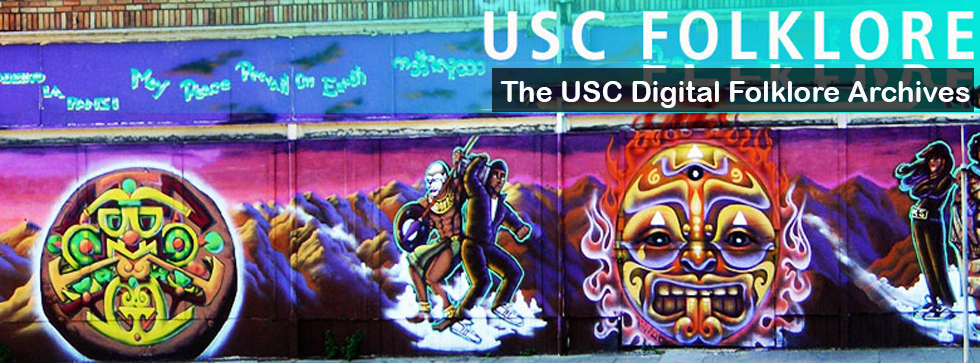Text: So it’s actually from elementary school, but we had this like Legendish thing where there was supposedly a basement in my elementary school. And like, you could tell because if you like, knocked on the floor, whatever, it sounded hollow. And so there’s like a basement underneath. And like a long, long, long time ago. They trapped this dinosaur down there. And like with the leftover food from the cafeteria, they like fed it to make it happy and like. And then they would say like, oh, and if you dig up the sand like in the playground if you dig far enough, you’ll find like, fossils and other things. But that was like our lore.
Context:
Informant is a freshman at USC studying Aerospace Engineering, originally from Tulsa, Oklahoma. We are sitting in a USC dining hall as she shares between bites of her pancake. She is excited and enthusiastic as she remembers her stories, using frequent hand gestures to emphasize her points.
“I learned it from the other kids at summer school in Oklahoma. A lot of people knew about it. But, like, we really only talked about it in summer school. I don’t know, like outside of summer school, we didn’t really. And when I was like, fifth grade and stuff, we didn’t really talk about it anymore. But it’s still in the back of my mind. It made it feel kind of interesting because I was like, oh, what if it’s true? Like that would be so cool and interesting. Like, I don’t know, because I kind of like mysteries. And I like not knowing something, you know, like something’s possible. Even though that definitely was not. I was like still kind of hoping that there was something there. I think I believed it at first. At first I was like maybe not a dinosaur was down there, but like the fact that for some reason I thought it was proven that it was hollow underneath. So I was like, what is down there?”
Analysis: This legend is an example of socially negotiated belief. The purpose was to confront individuals with what they actually believe, and present evidence like the floor sounding hollow in order to make one question what they believe to be possible. And even if one It’s evident that beliefs are crafted as a social process, especially within this specific demographic of children who are high on the continuum context, meaning they are more likely to believe this legend. This type of legend might be more plausible in this society of elementary school children as this is the time they are new to learning about dinosaurs and fossils and such items.

